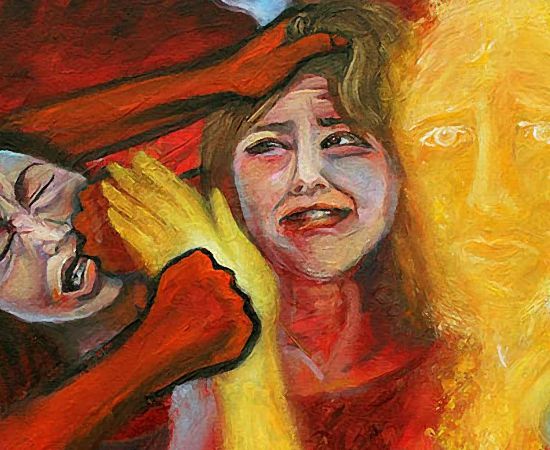More Coverage
Twitter Coverage
Satyaagrah
Written on
Satyaagrah
Written on
Satyaagrah
Written on
Satyaagrah
Written on
Satyaagrah
Written on
JOIN SATYAAGRAH SOCIAL MEDIA
"It is in the roots, not branches, that a tree’s greatest strength lies": Cherrapunji a North Eastern paradise in Meghalaya, land abundant in rainfall and popular for lush green hills and living root bridges, handmade from aerial roots of rubber fig trees

IN THE DEPTHS OF NORTHEASTERN India, within sight of the India-Bangladesh border, in one of the wettest places on earth, bridges aren’t built—they’re grown.
|
The southern Khasi and Jaintia hills are humid and warm, crisscrossed by swift-flowing rivers and mountain streams. On the slopes of these hills, a species of Indian rubber tree with an incredibly strong root system thrives and flourishes.
The Ficus elastica produces a series of secondary roots from higher up its trunk and can comfortably perch atop huge boulders along the riverbanks, or even in the middle of the rivers themselves. The War-Khasis and War-Jaintias, two closely related tribes in Meghalaya, long ago noticed this tree and saw in its powerful roots an opportunity to easily cross the area’s many rivers. Now, whenever and wherever the need arises, they simply grow their bridges.
In order to make a rubber tree’s roots grow in the right direction—say, over a river—the people of southern Meghalaya have used several different strategies. Sometimes, the roots of the trees are simply pulled, tied, twisted, and encouraged by hand to merge with each other, until, over time, they form the desired architectural structure. Root bridges have also been made by creating scaffolds out of wood and bamboo, and then training the young roots out across these temporary structures, replacing the more perishable elements many times as they rot in the intense monsoon seasons.
In some places, such as around the village of Nongriat, betel nut trunks, sliced down the middle and hollowed out, are used to create root-guidance systems. The thin, tender roots of the rubber tree, prevented from fanning out by the betel nut trunks, grow straight out. The trunks also have the added advantage of providing the roots with additional nutrients as they decay. When they reach the other side of the river, they’re allowed to take root in the soil. Given enough time a sturdy, living bridge is produced.
The root bridges can grow for as long as the organism they are a part of remains healthy, though they can take many years to initially become functional, the length of time being dependent on local conditions such as the health of the tree, the way the bridge is being grown, and the availability of nutrients in the soil that its being grown in.
However, once root bridges become established, they’re extraordinarily strong—strong enough that some of them can support the weight of 50 or more people at a time. In fact, because they are alive and still growing, the bridges actually gain strength over time—and some of the ancient root bridges used daily by the people of the villages around Cherrapunji may be well over 500 years old.
The roots bridges of southern Meghalaya come in a huge variety of shapes and sizes. They have been known to grow as long as 170 feet, and soar 80 feet above the streams they cross. Most living root bridges only have a single span, yet several have more than one, arranged as either as two parallel spans, or as two bridges stacked one over the other, such as the famous “Umshiang Double-Decker Root Bridge.”
The practice of creating new living bridges, and of preserving ones already in existence, is over large parts of Southern Meghalaya slowly fading out. In many villages across the region, the root bridges are little more than a memory. However, since they began attracting attention again in around 2004, local dedication to the bridges has, at least in a few places, kept them from being destroyed in favor of steel ones.
What’s more, a few new root bridges are currently under construction. In the village of Rangthylliang, an entirely new bridge is being grown using a bamboo and wood scaffold, and at the double-decker site in Nongriat, a new, third span is currently being grown above the other two, and should be ready for use within a decade.
|
While there are dozens of root bridges, which can be found all throughout the valleys between (very roughly!) the towns of Mawsynram and Dawki, few of these are easily accessible, or have nearby tourist facilities. To visit the bridges in the more remote areas, a local guide is an absolute must! A number of these bridges can be reached from Cherrapunjee Holiday Resort. Local maps to the bridges are available from the Resort.
The "Umshiang Double-Decker Root Bridge" is located in the village of Nongriat. Visitors can walk here from the small village of Tyrna. The village is accessible from Cherrapunjee by shared or private taxi. From the village, 2500 steps must be traversed to reach Nongriat. The walk takes about 1.5 - 2 hours each way. Nongriat offers basic accommodation to visitors, so it's possible to stay overnight for a more relaxed experience.
Serene Guest House is the best run establishment in Nongriat. From Nongriat, short hikes can lead you to several nearby root bridges, include several upstream from the village, a small, nice one, in the village of Mynteng, and several spectacular examples in the village of Nongthymmai. A large number of living root bridges are known to exist in the jungles around the town of Pynursla. To reach these, many of which are deep in the jungle and require several hours of tough hiking, make sure to find a reliable, local, guide.
The Rangthylliang Eco-Tourism society comes highly recommended, and can arrange your stay while in the area. Another option for visiting root bridges is the beautiful, remote, village of Kongthong, which has several in the near vicinity. The Kongthong Travelers Nest is a great base to explore the area from, with several spectacular root bridges within a few hours walk. There's also the village of Shnongpdeng, in the West Jaintia Hills, near Dawki, which can be used as a great staging area to explore several villages with root bridges.
Recommended are Kudeng Rim, Padu, and Burma. All of these villages have very little in the way of tourist facilities, so make sure to ask for help planning your visit in Shnongpdeng! Please respect the area's natural surroundings.
|
References:
 Support Us
Support Us
Satyagraha was born from the heart of our land, with an undying aim to unveil the true essence of Bharat. It seeks to illuminate the hidden tales of our valiant freedom fighters and the rich chronicles that haven't yet sung their complete melody in the mainstream.
While platforms like NDTV and 'The Wire' effortlessly garner funds under the banner of safeguarding democracy, we at Satyagraha walk a different path. Our strength and resonance come from you. In this journey to weave a stronger Bharat, every little contribution amplifies our voice. Let's come together, contribute as you can, and champion the true spirit of our nation.
 |  |  |
| ICICI Bank of Satyaagrah | Razorpay Bank of Satyaagrah | PayPal Bank of Satyaagrah - For International Payments |
If all above doesn't work, then try the LINK below:
Please share the article on other platforms
DISCLAIMER: The author is solely responsible for the views expressed in this article. The author carries the responsibility for citing and/or licensing of images utilized within the text. The website also frequently uses non-commercial images for representational purposes only in line with the article. We are not responsible for the authenticity of such images. If some images have a copyright issue, we request the person/entity to contact us at This email address is being protected from spambots. You need JavaScript enabled to view it. and we will take the necessary actions to resolve the issue.
Related Articles
- On 16th Aug 1946, during Ramzan's 18th day, Direct Action Day aimed to provoke Muslims by mirroring Prophet Muhammad's victory at Badr, Gopal 'Patha', the Lion of Bengal, heroically saved Bengali Hindus & Calcutta from a planned genocide, altering history
- “If we are to preserve culture we must continue to create it”: Bedara Vesha of Sirsi town is a unique folk dance with a legend of 300 years which is performed every alternate year to celebrate largest Holi festival of Karnataka, also known as Hunter Dance
- “Birds teach a great life lesson. All you have to do is listen to their song”: Chilika in Odisha is the largest brackish water lake in Asia and great attraction for tourists for fishing, bird watching & boating, indigenous & migratory birds are a delight
- अथ रामचरितमानस प्रकाशन कथा: गीता प्रेस, गोरखपुर ने 1938 से रामचरितमानस का प्रकाशन शुरू किया
- Lakshmi Narasimha Swamy Temple, Antarvedi, Andhra Pradesh
- Unsung Heroine Pritilata Waddedar, Who Shook The British Raj at the age of 21
- "घरवापसी": In Sodaladoodha, Rajasthan, Gautam Garasiya, once a Christian pastor, led 30 of 45 families back to Hinduism, turning a 125-year-old church—originally a temple—into a saffron Bhairavji Temple by Mar 9, 2025, with a grand procession from Talwara
- Fearless female sniper Uda Devi, who etched history during the Siege of Lucknow!
- "Its a desirable thing to be well-descended, but the glory belongs to our ancestors": An artist from Pakistan went viral for using artificial intelligence to reimagine life in Mohenjo Daro, one of the most striking monuments from the dawn of civilization
- "Nataraj, Nataraja, Jai Shiva Shankara Nataraja": One of mystical forms of Lord Shiva ‘Nataraj that represents the Lord’s cosmic dance that symbolizes both the destruction and the creation of the universe, revealing the cycles of death and birth
- "Culture is the widening of the mind and of the spirit": Origin of the timepiece AM and PM - Arohanam Martandasaya means the ascension (rise) of the sun, Patanam Martandasaya means the inclination of the sun
- Srikalahasti Temple, Dakshina Kailash
- "Each festival celebrated is a landmark for our spiritual growth": This week marks the beginning of celebrations for the Tibetan New Year, with Tibetans inside Tibet and around the world marking Losar, with music, dancing, and religious practices
- Birsa Munda: The tribal folk hero who was God to his people by the age of 25
- Mangaluru Kambala: Reinstating Traditions One Race At A Time




























